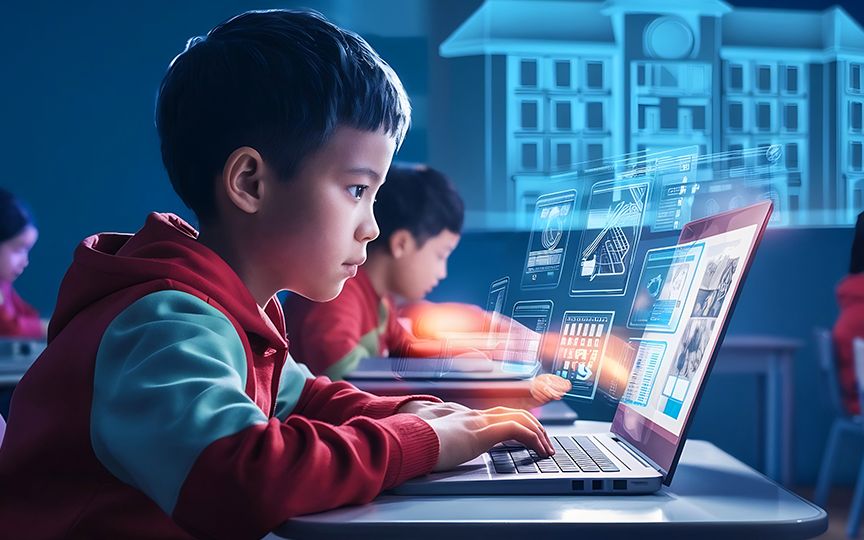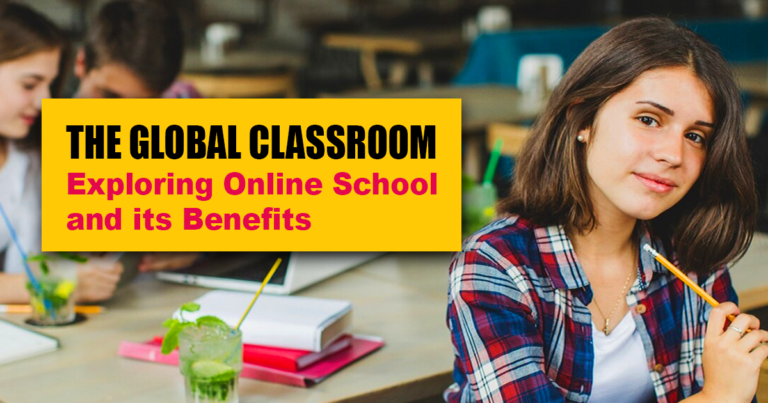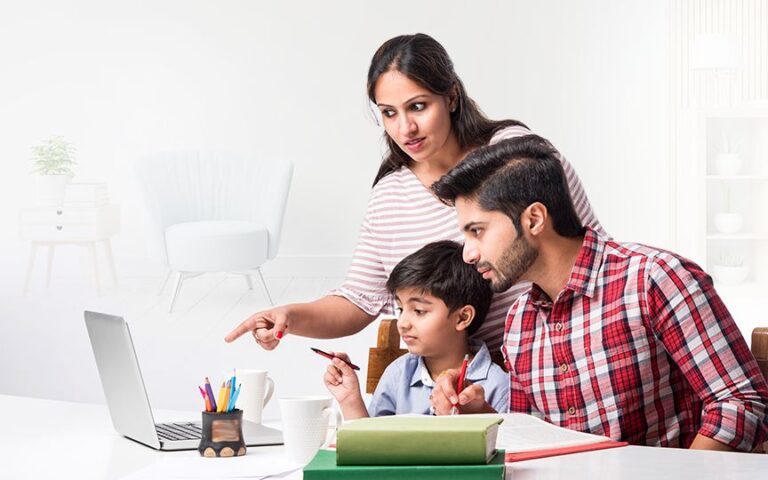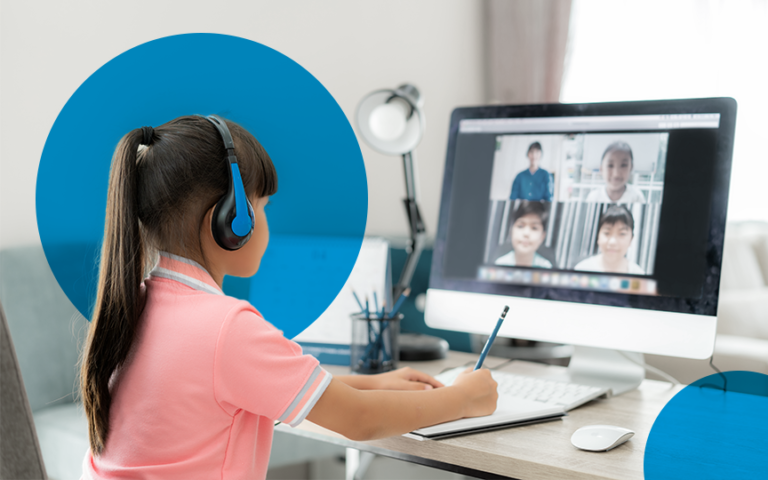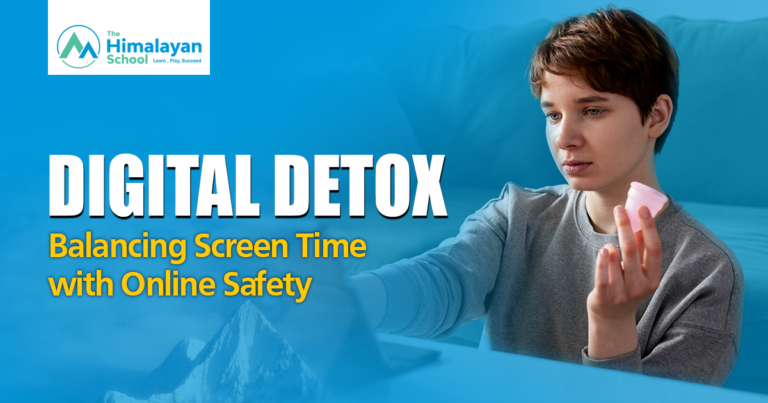The Future of Education: Kids and Online Learning Programs
The future educations of kids are shaped by technology and online learning programs. The future-proof technology seems challenging for parents to define their kids’ learning path with AI-driven education. With the availability of personalized learning, parents can involve their kids in improved learning with digital tools and turn screen time into productive time.
In this blog, you will get insight into virtual education and how it is designed to shape the students’ learning with advanced methods and specialized learning platforms, and engage them with trending learning options.
Preparing Your Child for Future-Proof Skills Through Online Learning Now
(1) Personalized Learning:
With ICT-integrated technology, educators’ tailored lessons and activities are recorded and uploaded on the LMS to help kids adopt personalized learning methods and learn with their unique style to overcome challenges. With this, teachers also have access to detailed analytics to check students’ progress and coordinate with their parents to share their strengths and weaknesses to enhance and improve them, respectively.
(2) Gamification & Interactive Learning:
Guiding students to learn through games and class lessons, and engaging more with interactive and kid-friendly lessons. Leaderboards are also created to motivate kids to keep learning. The main focus subjects are English and math to build their cognitive learning. With augmented reality and virtual reality, teaching subjects of history, science, and the arts becomes easy with methods of experiential learning.
(3) Hybrid Learning Models:
With blended learning options for kids, online education offers integrated learning resources on an LMS that covers the in-person instruction with digital tools. For academic sessions, children can attend online classes and visit the hybrid learning center to attend lab simulations and interact with their peers.
(a) Microlearning: With short study sessions of 15 to 30 minutes, online lessons on specific topics are designed for kids to retain the course specifics easily. This can also reduce students’ continuous screen hours.
(b) A Safer Learning Option: Guiding kids with positive collaboration and teamwork is best managed with online education. With limited interactions and reduced social risks and health concerns, choosing an online education is the best and safest option for your kids.
(4) Global Classrooms and Collaboration:
Students will collaborate with their peers all across the world, develop cross-cultural knowledge and cultural tolerance, and gain innovative insights and perspectives through diverse learning experiences with online education. AI-powered tools can help kids learn new languages with interactive learning options that enhance their memory and problem-solving ability.
(5) Soft Skills and Emotional Intelligence:
Online education has a pre-decided schedule of online classes and also focuses on developing soft skills like critical thinking, empathy, and creativity in children. With a new digital education strategy, expert-curated programs are developed to build kids’ social skills with hybrid learning options and help them understand the challenges of digital learning.
(6) AI and Automation:
Certain applications are integrated with LMS (Learning Management System) to automate the tasks and reduce the time consumption on certain topics, and provide students with the advanced class schedule and assignments to complete and upload assignments for review to track their progress.
(7) Access and Equity
The Himalayan School offers hybrid learning options to prepare students with digital knowledge and in-person interactions with teachers and peers for understanding collaborative environments.
(a) Ensuring Digital Access: Traditional classrooms even require digital access to enhance kids’ learning. Online education requires the major priority to access devices with internet connectivity. Online education is much more affordable in comparison with the traditional classroom.
(b) Alternative Education Models: The future of education is online learning platforms that offer a variety of learning methods that include project-based learning, introducing them to coding, digital arts, and many other digital learning options for online education.
(8) Lifelong Learning:
With the introduction of the key components of technology and how the integrated application of different tools helps kids to adopt learning that builds their social and life skills.
(a) Continuous Learning: The skills built with online education can be further considered by Essential Tips for parents and students to upskill with online programs, certificates, and participation in sports to progress and learn together.
(b) Self-Directed Learning: Access to the LMS with scheduled classes and updates of class-recorded videos with class notes, PPT can help children to define their own learning schedule and complete assignments with the suitable revision source and methods to help teachers and parents to monitor and track their performance.
Digital Ethics and Literacy: With online education, students are taught about appropriate screen time, digital literacy, privacy, and ethical behavior to become informed citizens and navigate their learning by developing an understanding of reliable information and data privacy issues. Incorporating AI literacy in early education prepares children for challenging roles in the near future
Conclusion
The future of education is empowered with digital literacy to engage kids to choose the best path with learned skills and knowledge to overcome social challenges. You can consider The Himalayan School for your child’s promising future. With flexible options, personalized learning, and an interactive platform, students can learn with convenient options to study at home. This cost-effective online education also helps them to build global engagement.

